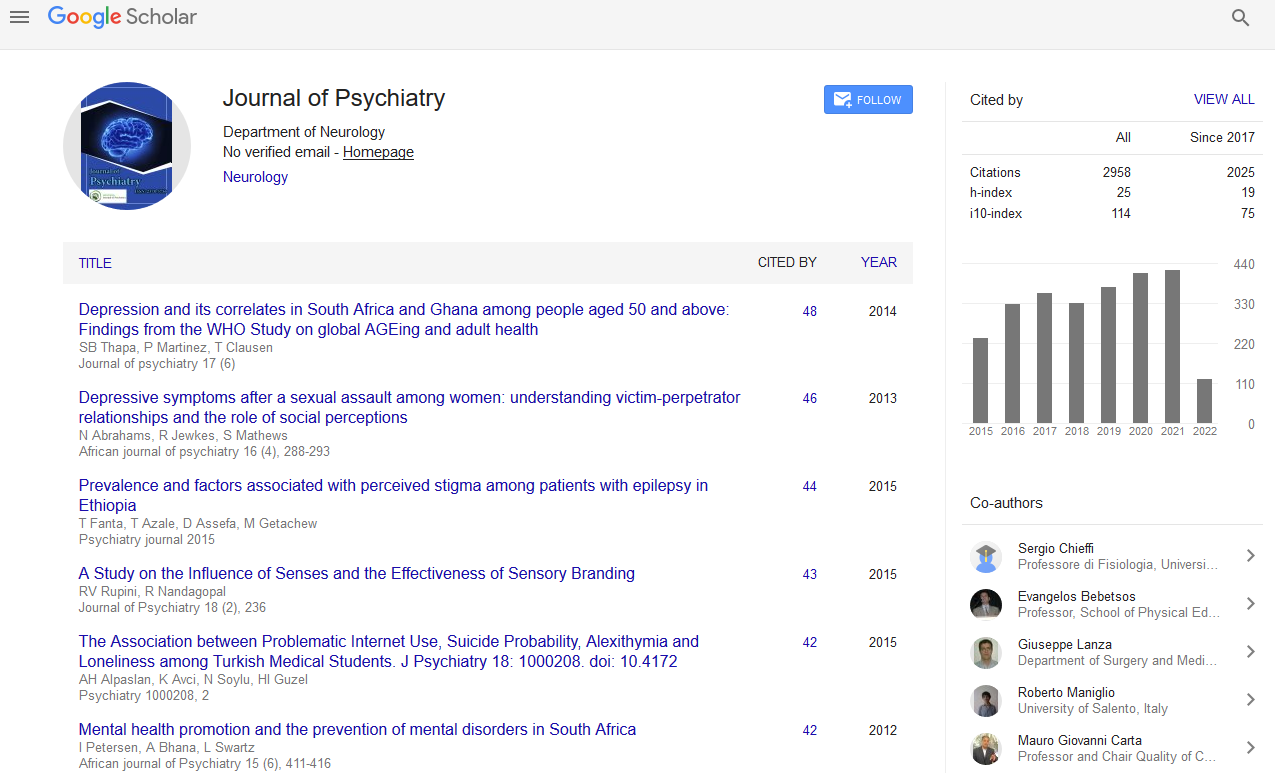PMC/PubMed Indexed Articles
Indexed In
- RefSeek
- Hamdard University
- EBSCO A-Z
- OCLC- WorldCat
- SWB online catalog
- Publons
- International committee of medical journals editors (ICMJE)
- Geneva Foundation for Medical Education and Research
Useful Links
Share This Page
Open Access Journals
- Agri and Aquaculture
- Biochemistry
- Bioinformatics & Systems Biology
- Business & Management
- Chemistry
- Clinical Sciences
- Engineering
- Food & Nutrition
- General Science
- Genetics & Molecular Biology
- Immunology & Microbiology
- Medical Sciences
- Neuroscience & Psychology
- Nursing & Health Care
- Pharmaceutical Sciences
Abstract
Autism-A Multifaceted Diffuse Pathology
Radek Ptacek, Dagmar Brejlova, Hana Ptackova, Lucie Domkarova, Jiri Raboch and George B Stefano
The causes of pervasive developmental disorders have yet to be resolved. Needless to say, the etiology is complex as are the individual factors, especially in regard to autism. Certain findings may be integrated into early coherent models, but the heterogeneity of findings remains a central feature of autism. The present review examines contemporary areas of research and a few prominent theories specifically dealing with autism. The areas under scrutiny are divided into common academic compartments, such as biological, environmental. Autism represents a very timely topic due to its rising incidence in the population as well as changes in previous concepts occurring at this time. Besides the neurological, biological and epidemiological factors contributing and possibly initiating this disorder we discuss the possible involvement of endogenous morphine, especially in regard to depression and limbic functions. Lastly, we advance the theory that dysfunctional mitochondria appear to be involved in autism as well, explaining the widespread occurrence of its characteristics within the construct of susceptibility to stress and trauma. Thus, the diffuse manifestations of Pervasive Developmental Disorder occur potentially by altering energy processes.


